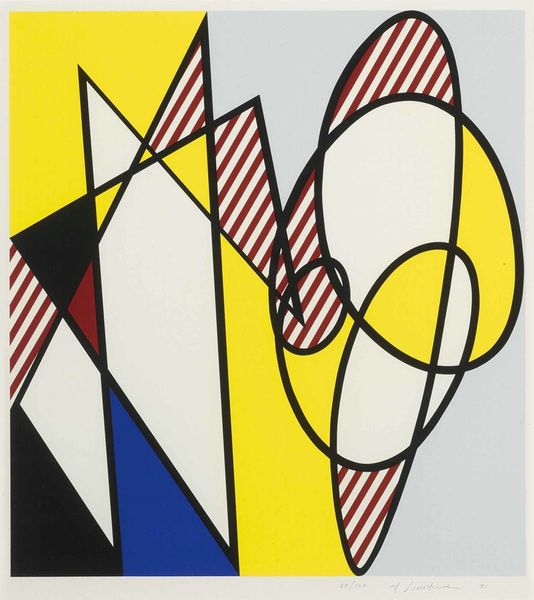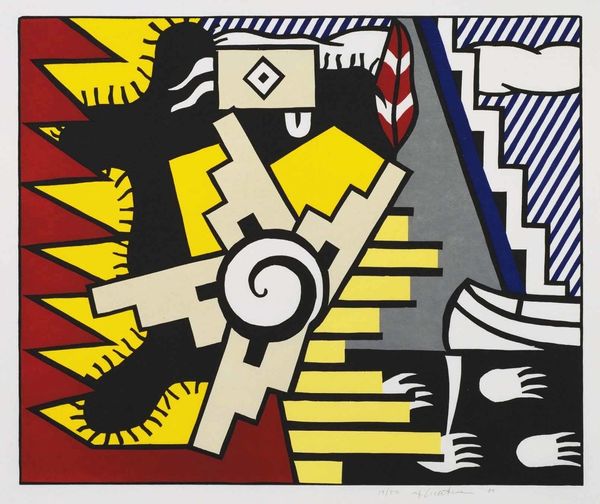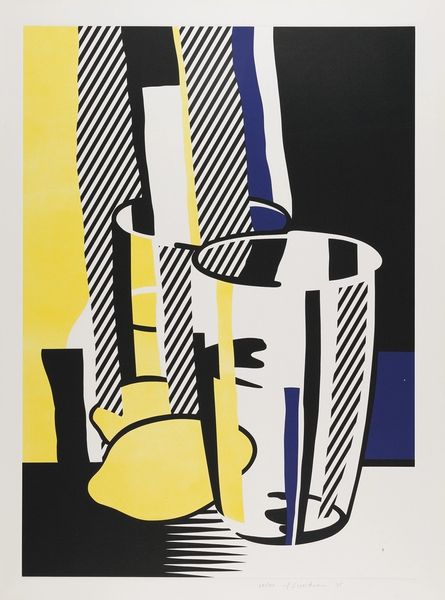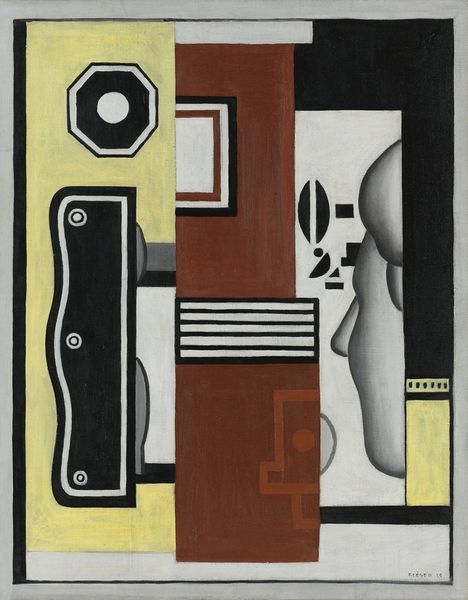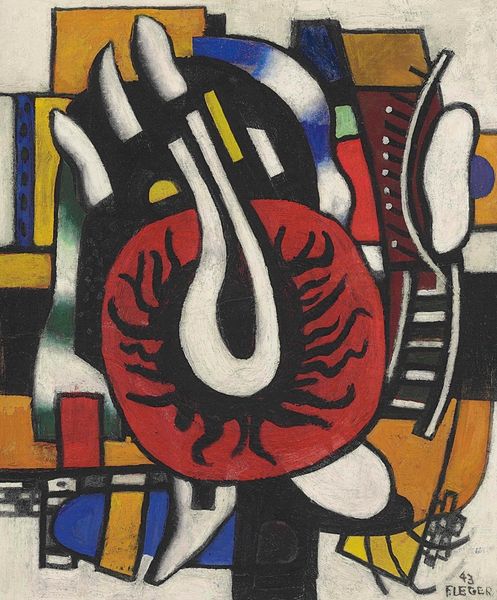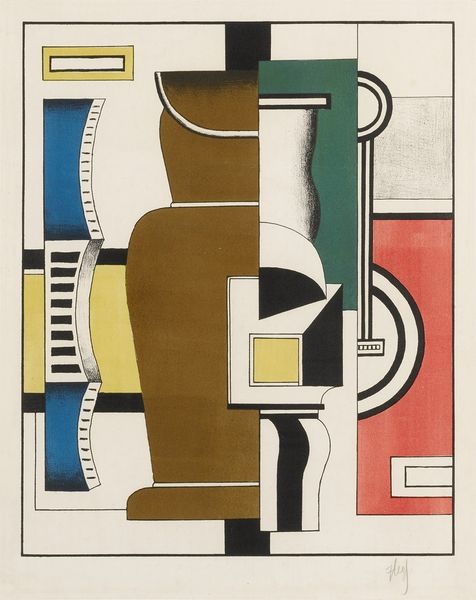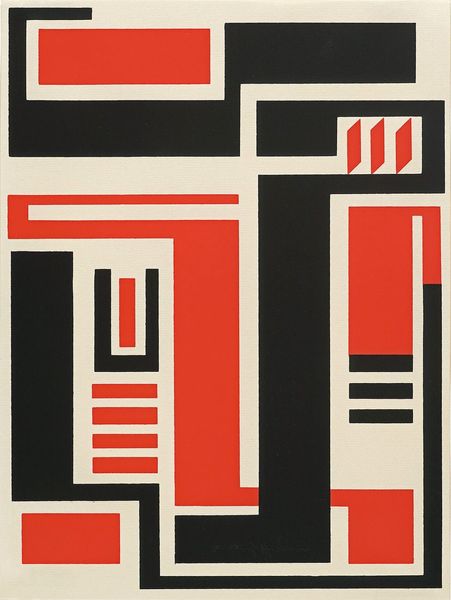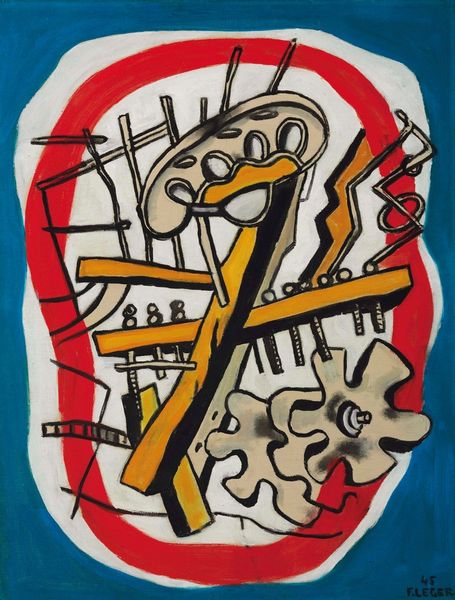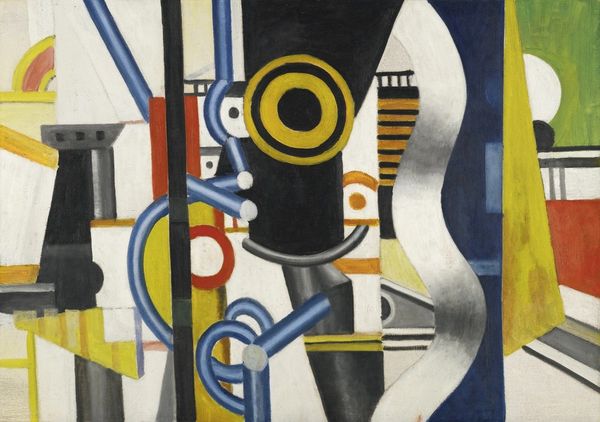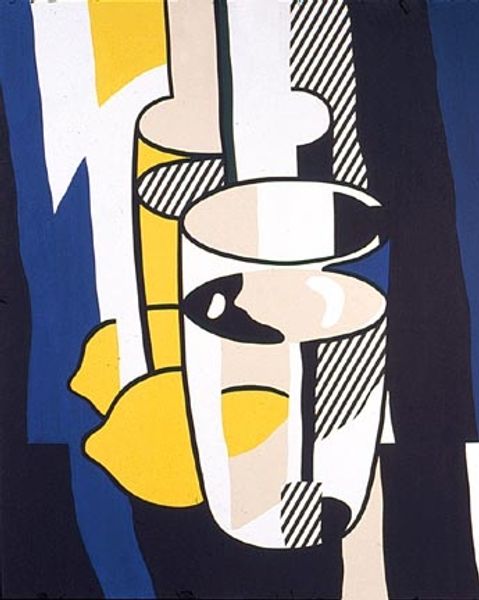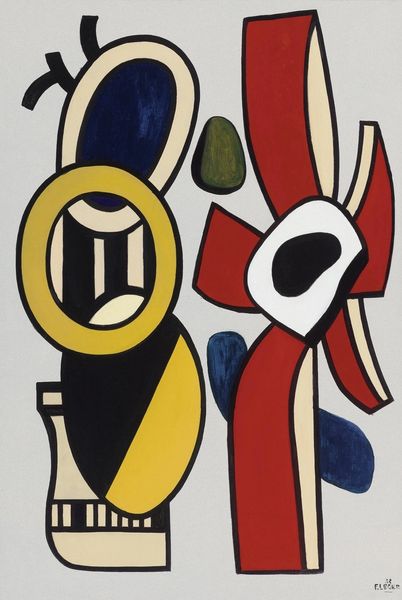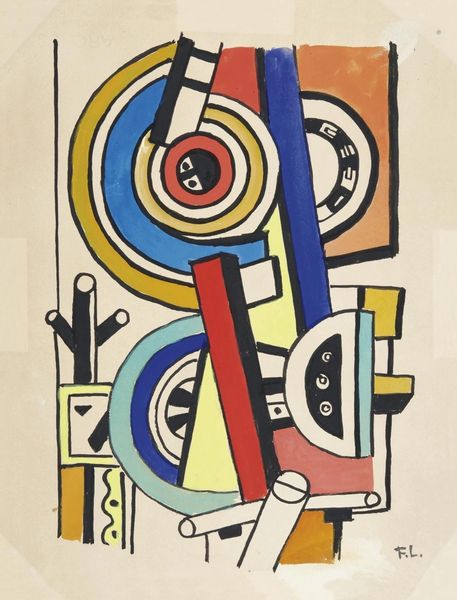
graphic-art, poster
#
graphic-art
#
popart
#
pop art
#
geometric
#
pop-art
#
cityscape
#
poster
#
modernism
Copyright: Modern Artists: Artvee
Curator: Roy Lichtenstein's 1967 screenprint "Aspen Winter Jazz" immediately jumps out, doesn’t it? So graphic, so bold. What's your first impression? Editor: It feels strikingly modern, almost cold despite the suggestion of music. The stark geometric forms and limited color palette give it a detached quality, yet there's an energy simmering beneath the surface, hinting at the dynamism of jazz. Curator: Indeed! We must consider that this was a poster designed for the Aspen Winter Jazz festival. Lichtenstein, known for his appropriation of comic book aesthetics, distills musical instruments and figures into these flat, simplified shapes. It embodies that period’s exploration of high versus low culture. Editor: I'm drawn to the silkscreen process itself. The flatness achieved through printing, the layering of colors—these all contribute to its visual impact. The Ben-Day dots, signature to Lichtenstein, remind us of commercial reproduction and the materiality of the poster itself as a mass-produced object. Curator: Right. And looking at the date of '67, it sits at a crucial intersection in American culture—a moment where pop art’s influence intertwined with movements concerning racial and gender equality. Consider, who was represented at this Jazz festival, who had access? Editor: Thinking about that context, this artwork seems almost like a commentary on the commodification of culture. Jazz music, historically significant for Black communities, is presented in this streamlined, almost sterile manner, transforming the music itself into a commodity. Curator: It brings to light the complex interplay between artistic expression and its relationship with identity and socio-economic narratives. But it’s the poster's use as an advertisement for a particular event, not just art for art’s sake. Editor: Yes, seeing it in this context changes everything. I had only been viewing it as an aesthetic object, a triumph of pop art production. I now see it implicates itself in larger narratives about representation, labour and who gets to profit from cultural movements. Thank you!
Comments
No comments
Be the first to comment and join the conversation on the ultimate creative platform.
